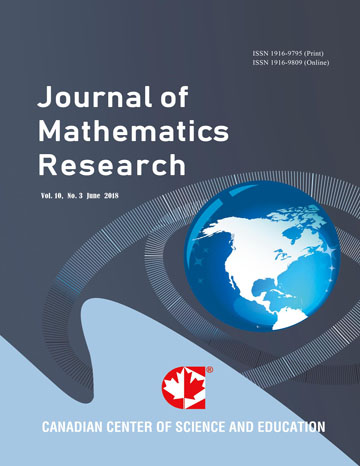Eccentric Coloring of a Graph
- Medha Huilgol
- Syed Asif Ulla S.
Abstract
The \emph{eccentricity} $e(u)$ of a vertex $u$ is the maximum distance of $u$ to any other vertex of $G$. A vertex $v$ is an \emph{eccentric vertex} of vertex $u$ if the distance from $u$ to $v$ is equal to $e(u)$. An \emph{eccentric coloring} of a graph $G = (V, E)$ is a function \emph{color}: $ V \rightarrow N$ such that\\(i) for all $u, v \in V$, $(color(u) = color(v)) \Rightarrow d(u, v) > color(u)$.\\
(ii) for all $v \in V$, $color(v) \leq e(v)$.\\
The \emph{eccentric chromatic number} $\chi_{e}\in N$ for a graph $G$ is the lowest number of colors for which it is possible to eccentrically color \ $G$ \ by colors: $V \rightarrow \{1, 2, \ldots , \chi_{e} \}$. In this paper, we have considered eccentric colorability of a graph in relation to other properties. Also, we have considered the eccentric colorability of lexicographic product of some special class of graphs.
- Full Text:
 PDF
PDF
- DOI:10.5539/jmr.v7n1p1
Index
- ACNP
- Aerospace Database
- BASE (Bielefeld Academic Search Engine)
- Civil Engineering Abstracts
- CNKI Scholar
- DTU Library
- EconPapers
- Elektronische Zeitschriftenbibliothek (EZB)
- EuroPub Database
- Google Scholar
- Harvard Library
- IDEAS
- Infotrieve
- JournalTOCs
- MathGuide
- MathSciNet
- Open policy finder
- RePEc
- ResearchGate
- Scilit
- Technische Informationsbibliothek (TIB)
- The Keepers Registry
- UCR Library
- Universe Digital Library
- WorldCat
Contact
- Sophia WangEditorial Assistant
- jmr@ccsenet.org
